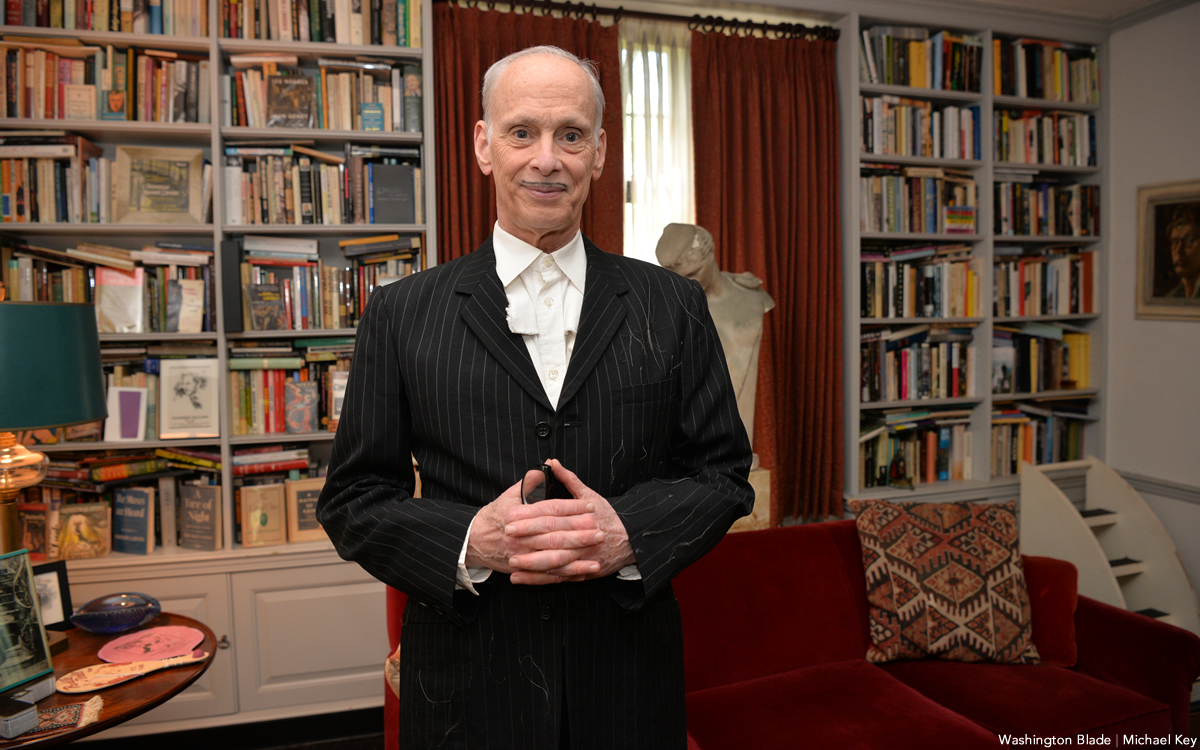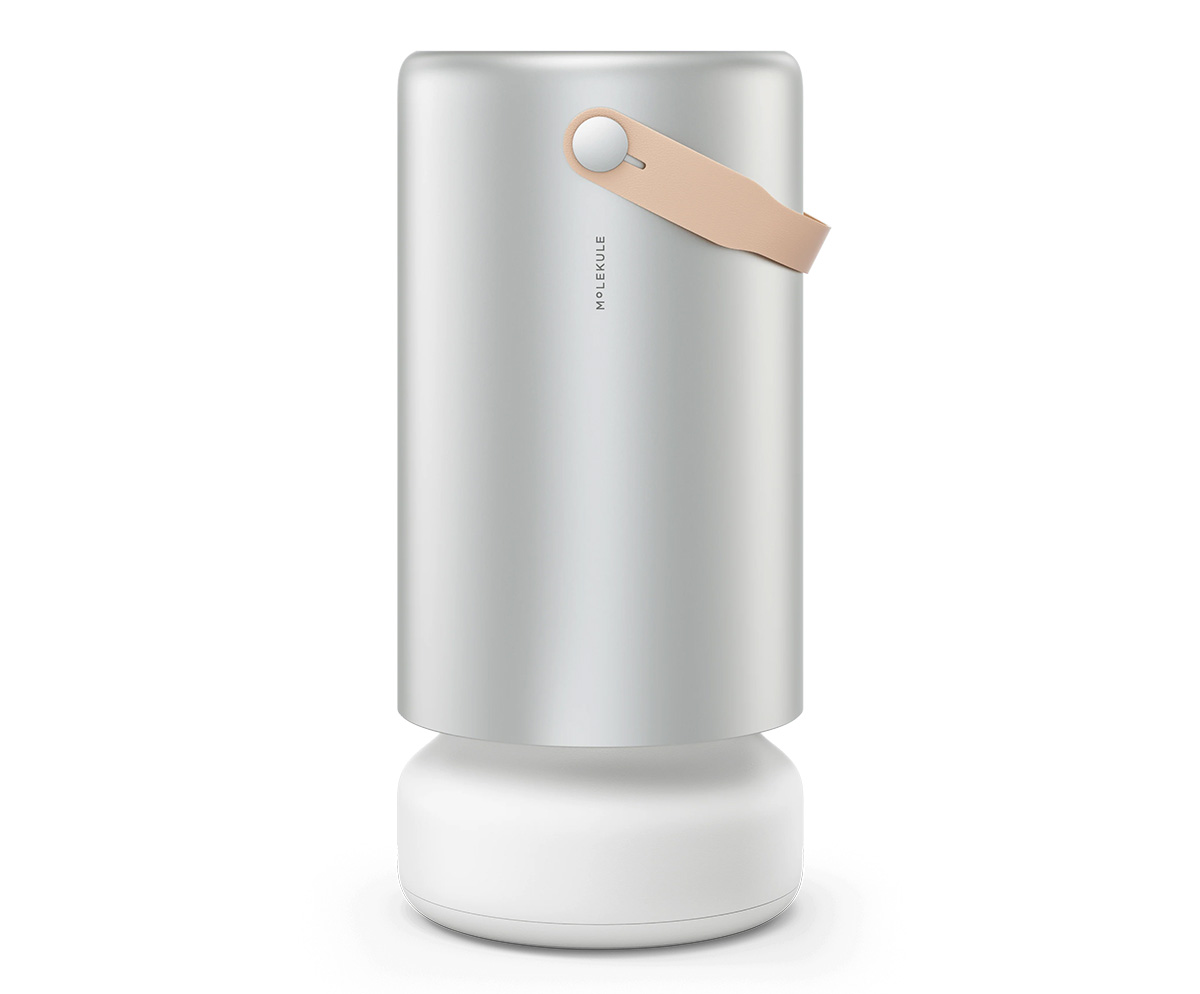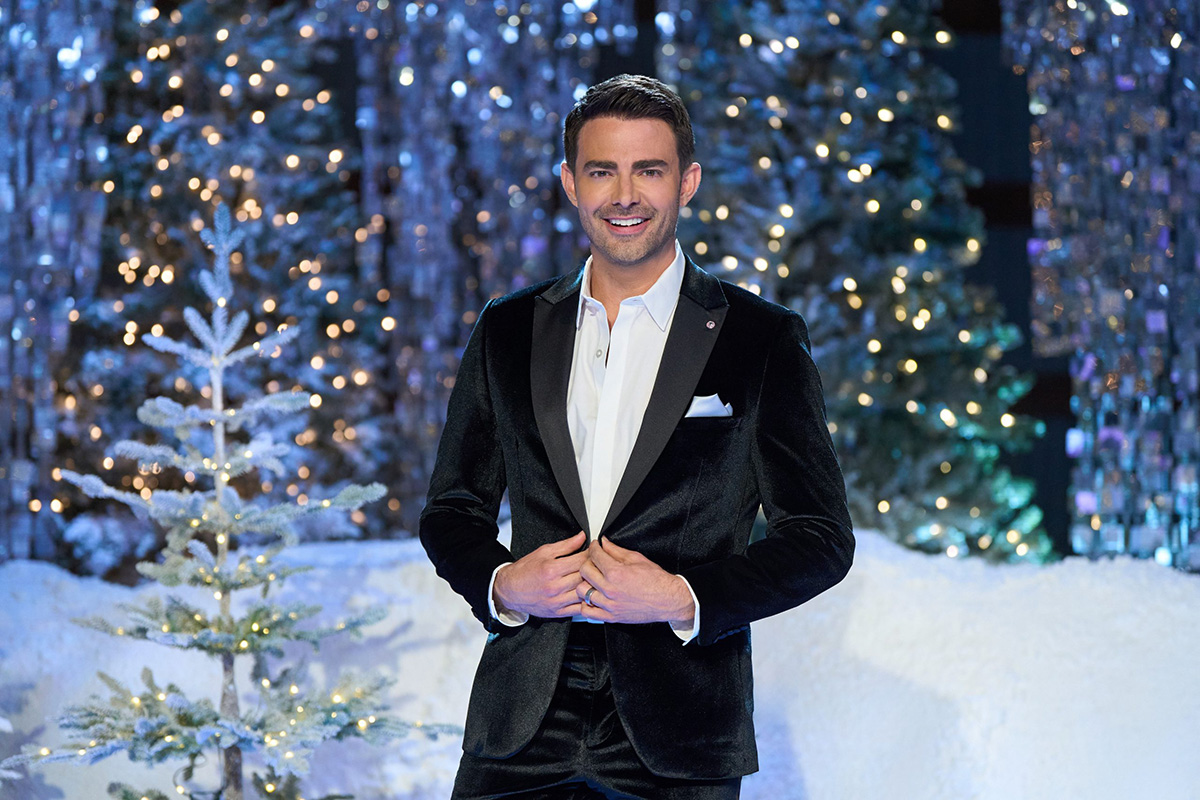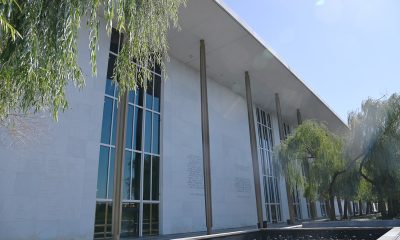a&e features
Michael Tilson Thomas Q&A
The out conductor on his long career in classical music


Michael Tilson Thomas says the public ultimately decides what works are retained in the classical canon.
Washington Performing Arts presents the San Francisco Symphony
Kennedy Center Concert Hall
Saturday, April 16
4 p.m.
$55
Though just four performances, the San Francisco Symphony’s current East Coast mini-tour features two programs.
The symphony will perform on Saturday, April 16 at 4 p.m. at the Kennedy Center Concert Hall performing Franz Schubert’s Symphony No. 8 “Unfinished” and Gustav Mahler’s “Das Lied von der Erde.” The players will be joined by mezzo-soprano Sasha Cooke and tenor Simon O’Neill. Two days prior, they’ll perform the same program at Carnegie Hall. The symphony will explore works by Copland and Schumann at the New Jersey Performing Arts Center this weekend.
We caught up with Music Director Michael Tilson Thomas, now in his 21st season with the symphony with whom he’s shared 12 Grammys, by phone this week. His comments have been slightly edited for length.

Michael Tilson Thomas, music director of the San Francisco Symphony, says managing an orchestra like a business is a mistake. (Photo by Bill Swerbenski; courtesy San Francisco Symphony)
WASHINGTON BLADE: You’ve recorded many Mahler symphonies. What is it about his music that continues to resonate with you?
MICHAEL TILSON-THOMAS: His music is very central to my whole view of life and that was evident from the first time I heard his music when I was around 13. This piece in fact, which we’re about to play in Washington, “Das Lied von der Erde,” I heard the last movement, the farewell, called “Der Abschied,” and it was stunning, a shock to me to hear music which so completely described the shape of my own soul and what I felt to be my parents’ souls, where all the kind of aching questions about the meaning of life and all sorts of questions which I hadn’t even consciously formed, but somehow I just knew this was a testimony that meant so much to me. Part of that was the musical presentation of situations where there can be bitterness or frustration or conflict, but nonetheless there’s still an element of beauteousness as well. For me, the message of the music is to hold on to the beauteousness at whatever the cost. That resonated with me from the first moment and still does.
BLADE: Does the Schubert symphony you’re also performing contrast with or complement the Mahler?
TILSON-THOMAS: Schubert (was) … using this sort of haunted language that was very Czech-influenced because his parents came from what is now the Czech Republic and of course Mahler did as well, so there is this sort of major/minor haunted harmonic language that’s part of it. … On the piano you have a note which you sometimes call E flat or sometimes you call it D sharp. On the piano, it’s the same note, but in orchestral music, these two notes are actually different notes. They do different things and they lead in different directions. Schubert and Mahler are both constantly reinterpreting the meaning of a note. … You’re being kind of guided, pulled back and forth across the line of the meaning of a single note taking you into a brighter or darker world. That’s very much what they’re playing with.
BLADE: As you perform around the country and the world, do you sense differences in how the audiences receive the work?
TILSON-THOMAS: I think we’re very aware of the different audiences. They’re ectoplasmic almost. You come off the stage and you can just sense a certain energy and focus in the hall and that does affect the way you feel about the music. I’m fond of saying these big places for me are like national parks that you return to. You’ve wandered there before, but the company with which you find yourself is different and has an enormous influence on what the nature of the experience is going to be.
BLADE: Have you been insulated to some degree in San Francisco from the kinds of challenges many of our other national symphonies are facing?
TILSON-THOMAS: No, I wouldn’t say so. Like all the major orchestras, we’ve experienced different kinds of crises and growing pains, visions coalescing as different generations have moved through the orchestra. … These things are inevitable. I’ve been performing symphonic music now for 50 years. I started when I was 20, so I’ve seen many changes happen in music and society and music coming from China and Venezuela and parts of the world from which we didn’t used to see so many people. The growth of all these things is a very positive thing in the big picture. So there’s a very positive growth state and at the same time, there are definitely growing pains in society itself. How are these things going to be sustained and grown and what do young musicians coming into the profession desire? What kind of life do they want to have? All these things are being turned over and discussed even as we speak.
BLADE: Are you pressured to perform film scores or saw away under pop acts or that sort of thing to bring in new people? Or have you tried to stave off that sort of thing?
TILSON-THOMAS: There’s a balance that needs to be struck and there’s always going to be a concern of having too many programs that would be apart from the central mission of the orchestra. Not just in symphony orchestras but with any arts organization. There’s a lot of talk about searching for sustainable business models … but these are not businesses. These are idealistic organizations that are communities of people that were established to share a particular art as a living tradition and strengthening and preserving that and passing it on to many generations. That’s the real purpose. It’s necessary perhaps in each new generation to remind ourselves that’s what we’re doing and what we need to do.
BLADE: Your bio makes reference to your work “reimagining the concert experience.” In what ways have you done that?
TILSON-THOMAS: I’ve been very involved with multi-media, new technology and something of a pioneer in using the online resource Internet2 to reach people with educational messages in territories around the world. … Most recently with a process called LOLA, an information system that reduces online latencies and makes it possible now within a thousand kilometers to perform music with someone as if you’re really in the same room with them. … With the New World Symphony, we’ve done a lot of work in video that has been ahead of the curve. Not just concert performance videos … but creating kind of art installations inside the concert hall.
BLADE: Have you always been out professionally?
TILSON-THOMAS: Oh, I don’t know. That’s hard to answer. Joshua (Robison) and I got married a couple years ago but we’ve been together 40 years. Since the very beginning, we were together very clearly with no disguise and that goes back quite a ways at this point. To us, that didn’t seem so remarkable. We worked together in a production company that makes a lot of different musical products and education projects happen around the world and we’ve always done that. We haven’t been involved, as many others have been, in any courageous crusade of one type or another. We supported those things and I have such respect for people who did that. On the other hand, people now say it was somewhat extraordinary that we were living our lives that way in terms of being transparent about being together then and that was unusual, I guess, at the time.
BLADE: How gay are our orchestras in general?
TILSON-THOMAS: I’d say a very rough number would be maybe 10 percent or something like that. Maybe more.
BLADE: Perhaps more in San Francisco?
TILSON-THOMAS: Not necessarily. Orchestras are very individual animals. It was, of course, different when I first began conducting. In any major orchestra there might have been one or two people who were not even out but everybody just kind of knew they were gay. As opposed to now when there are many people in all the major orchestras who are LGBT and it’s not in any way a big deal and certainly not with the many young musicians. If people are thinking they might make music with someone, what’s going on with their gender or sexuality is of no interest whatsoever. If you’re talking about where you’re placing the third of a major chord or issues of tuning or articulation, then that’s a big deal.
BLADE: It’s interesting when you see the kinds of people given the Kennedy Center Honors over time and how popular acts are now being inducted much more often than performers from the classical arts. At the same time, there’s a lot of hand wringing in our symphonies and opera companies and so on. I could give tons of examples. Is society being slowly dumbed down over time?
TILSON-THOMAS: Well there are different kinds of occasions that serve different purposes. There are lots of awards and prizes that are given for certain types of work, like the MacArthur Fellows or the Pulitzer Prizes or the great number of other awards and prizes that are given to people whose names would be little known to the general public, but which nonetheless exert quite an influence within various arts worlds. … Some of these things are much more of an occasion in certain realms than something like the Grammys or the Oscars or those kinds of things which are really more shows. It used to be that if you were from the classical arts and you were up for a Grammy, you would go to the Grammys and you were presented with it there. That no longer happens. Something might happen in a hotel lobby earlier in the day or something because those awards are not in the mainstream.
BLADE: They only give out about six on the air anymore out of 90-some categories or whatever it is.
TILSON-THOMAS: Yeah, well, I guess in any art there will always be different sides. You have people doing quite specific work which they know from the beginning will appeal to a small number of people. Other people are working in much wider areas but it’s extraordinary at this particular moment, the diversity of work that is taking place. It’s really quite remarkable the very interesting experimentations with styles that a lot of people are doing. A lot of people are writing and thinking new thoughts, way more than you would think based on the gloomy predictions that are often made about the future of all of this. It’s not quite the way it looks from the outside when you see all the young people out there creating new work.
BLADE: Would you say the works of Mahler and Schubert don’t carry quite the cultural gravitas they might have a generation ago perhaps?
TILSON-THOMAS: I saw something in San Francisco the other night and one of the pieces on the program was written in 1199. It was the earliest and the most recent piece was written in 1963. So it’s extraordinary how much has changed in that period of 7- or 800 years. There were certain things about that piece from 1199 that were very reminiscent of works by Steve Reich or John Adams and that are still very influential in contemporary musical thought. A composer like Schubert or Mahler, the reaction to whom at the time was often hostility or incomprehension, over time it has been proven that there was something in that music that people wanted to come back to. Ideas that proved to be so powerful, so moving and so authentic that people wanted to hear them again and again and it’s fascinating because it’s the audience that makes that decision. I can be a big fan of some particular composer and can champion that composer through many times and create situations in which their music will be presented, but ultimately 10 or 15 or 20 years later, it will be the public that decides if that music means enough that they want to hear it again.
BLADE: Has audience etiquette improved or deteriorated to any noticeable degree over the course of your career?
TILSON-THOMAS: It’s very different in different places and even on different evenings. These things are very different from city to city and country to country. Even in San Francisco, there’s a certain sense of what the character of the audience is like. The Wednesday night audience, the Thursday night audience, they’re all slightly different in their reactions and in their focus. We created a new series called SoundBox which is designed for people who’ve never been to classical music concerts before with very experimental repertoire and it uses video projection and other things and is kind of set in a club atmosphere. Drinks are served and you have 20 minutes of music then 20 minutes of lounge-type activity and then the music comes back. Well, in fact these audiences are more quiet and focused than the subscription audience can be. They’re totally focused. When the music starts, they’re totally in it. What for me has been particularly gratifying is that with some of this earlier music we’ve been doing, we did one piece by Monteverdi from 1610, so many young people came up and said how transporting it was and you think, “God, here’s something from 400 years ago that can reach out and have that kind of emotional effect.” That really is one of the greatest treasures of my life.

Michael Tilson Thomas (Photo by Spencer Lowell; courtesy San Francisco Symphony)
a&e features
Have yourself a merry John Waters Christmas
Annual holiday show returns to Alexandria and Baltimore

When it comes to iconic Christmas scenes in movies, none can top the tree-toppling tantrum thrown by cha-cha heels-deprived Dawn Davenport in John Waters’s fifth full-length feature “Female Trouble” from 1974. Therefore, it’s not surprising that Waters continues to make art out of Christmas, performing his spoken word Christmas tour in cities across the country. Waters has even more reason to celebrate with the release of his new red vinyl 7” single, a cover of Little Cindy’s “Happy Birthday Jesus (A Child’s Prayer)” on the A-side, and “A Pig Latin Visit From St. Nicholas” on the B-side. If you’re still looking for unique Christmas gifts, consider this record. As always, John was kind enough to make time for an interview in advance of his tour dates.
BLADE: John, in preparation for this interview with you, I went back and listened to Little Cindy’s original rendition of “Happy Birthday Jesus (A Child’s Prayer)” on your “A John Waters Christmas” CD.
JOHN WATERS: One thing I did, if you notice, I make the same stumble in my recording that she did in the original.
BLADE: It sounded to me like she got choked up.
WATERS: No, I think she just stumbles over a word, so I stumbled over the same word. It’s appropriation, insanely.
BLADE: Is this a song you first became aware of in your youth or when you were an adult?
WATERS: When I was doing the Christmas album, I had this friend named Larry Benicewicz. He was kind of my idea man with music. He knew every single old record. I would say to him, “Weird Christmas songs,” when we were doing a soundtrack, or a song about bears, or a song about this, and he would give me all these tapes. It was one of the ones he played for me. A lot of the songs I put in my movies and on my records, I did know as a kid. I did not know this one, but I immediately embraced it. I don’t think it’s campy. I think it really is spiritual in a weird way. My doing it makes it a novelty record. I am really for novelty records, and there aren’t any anymore. Why was there not a COVID novelty record? That’s insane. The dance “The Bug” that’s on the “Hairspray” soundtrack would be perfect for COVID.
BLADE: The thing that struck me was that for a Christmas song in the voice of a child, a kind of death pall hangs over it, with lines like, “If I was good you’d let me live with you” and “they nailed you to the cross, they wanted you to die.”
WATERS: All of it! When I see children at midnight mass kneeling in front of a nude man nailed to a cross, I feel like I’m at The Eagle! It is S&M, it’s creepy. I took the same cover (photo) from her record to parody and put my face on it. The same thing I did with The Singing Dogs last year when I covered (their version of) “Jingle Bells.” I’m really into novelty records. I love them and I’m trying to bring them back. I don’t expect anybody to ever play these records. Even The Singing Dogs one said on it, “Please do not play this record” [laughs]. And the flipside, the Pig Latin version, is almost impossible to listen to.
BLADE: I’m so glad you mentioned that. “A Pig Latin Visit From St. Nicholas” reminded me of the lost art of speaking in Pig Latin. I also recall watching the PBS series “Zoom” as an adolescent and learning to speak “ubbi dubbi,” a distant relative of Pig Latin. Do you think that the time is right for a Pig Latin or ubbi dubbi revival?
WATERS: Here’s the thing, I never could pick up any language, except Pig Latin. I’ve been in every foreign country. Foreign countries have given me money to learn to speak the language. I can never do it! But Pig Latin…my parents and other parents in the ‘50s spoke Pig Latin so kids couldn’t understand what they were saying. Then my mother taught it to me, and I used it. The hardest take to shoot in “Pink Flamingos” was not eating the dog shit. It was when the cast skipped, in one take, saying “E-way, are-yay e-they ilthiest-fay eople-pay in-hay e-they ole-hay ide-way orld-way.” We’re the filthiest people in the whole wide world in Pig Latin. We had to do so many takes so they could do it once without screwing it up. In “Polyester,” Edith (Massey) answers the phone, “ello-hay.” I did a photo piece where it was all subtitled in Pig Latin. Like “osebud-Ray” (from “Citizen Kane”) or in “Streetcar,” “ella-Stay!” [Laughs] All the iconic dialogue translated into Pig Latin. My assistant who helped me do it, had never heard of Pig Latin. She really got good at it because she lived in many foreign countries and can pick up languages. But it’s not that easy to do it correctly and read it. Your computer will translate into Pig Latin.
BLADE: AI understands Pig Latin?
WATERS: I guess that’s AI. It wasn’t 100% right, but it was close. I can speak it if I look at it, but just do a bit at a time. It was a challenge that no one would possibly care about or want to do.
BLADE: I think you pulled it off very well.
WATERS: If you want people to leave on Christmas morning, you put it on. That’s how you get your guests to leave. It’s time to go.
BLADE: Ood-gay i-bay! How did your relationship with record label Sub Pop, which released 2021, 2022, 2024, and new 2025 holiday singles, come about?
WATERS: I believe the first thing I did for them was “Prayer to Pasolini.” They came to me through Ian Brennan. He’s won a couple Grammys for World Music, but he is also is one of my agents who does the Christmas tour and a lot of my shows, anything with music. He helped me arrange each one of the songs. He had a relationship with Sub Pop. It was perfect. My friends in Baltimore, (the band) Beach House, have had huge success.
BLADE: That’s right, they’re on Sub Pop!
WATERS: Yes! I’m happy to be on it. I’ve even been to the warehouse and posed for pictures like Jackie Suzanne used to do.
BLADE: Is there any chance that “A John Waters Christmas” might be reissued on vinyl by Sub Pop?
WATERS: No. It’s such a nightmare to get the rights and to renew them. You have to find the publisher and the writer, and they usually hate each other. It doesn’t matter if it’s obscure or famous, it’s hard to get. You have to make the deal. The singer doesn’t get anything unless they play it on the radio. It would be so complicated legally, and there would be such a [laughs] tiny audience for it. I hope it will come out again. The same thing with the one for Valentine’s Day. I had two of them that did quite well when they came out; “A Date With John Waters and “A John Waters Christmas.” The “John Waters Christmas” album is still the soundtrack that plays whenever I’m doing my spoken word Christmas show as people are entering the theater.
BLADE: Aside from your annual Christmas show tour, what else do you do for the holidays now, and are there any traditions that you’ve carried over from your family?
WATERS: Certainly! I have two sisters, my brother’s widow, and me, so there are four and we take turns each year to have the Christmas dinner. Mine was last year. An entire sit-down dinner. Mom’s China, the silverware, the entire full dinner. It’s pretty traditional. I don’t have a Christmas tree, but I do decorate the electric chair from “Female Trouble.” That is a tradition in my family. We do have Christmas decorations, but they’re usually weird ones that fans sent me. I have one with Divine knocking over the Christmas tree, and the Christmas tree lights up, all sorts of amazing things. There is definitely a tradition here that might be a little altered, but it is definitely a tradition. I used to have a giant party every year, but COVID ended that. I still wouldn’t want 200 people in my house breathing right now.
BLADE: I was looking at your tour schedule and wondered if there are any new cities in which you’ve never performed the John Waters Christmas show that have been added to this year’s schedule?
WATERS: I don’t think there’s a city in America in which I haven’t done one show! The only places I haven’t been to are Hawaii and Alaska. I could do it there, but it’s too long on a tour. I can’t think of a city I haven’t played in in America over the last 50 years. The Christmas show is completely different every year. It doesn’t matter if you saw it last year.

Some gifts scream practical, others whisper luxury, and a few flat-out blur the lines. From cocoa that feels ceremonial to a cologne that linger like a suggestive smirk, this year’s ultimate gift picks prove that thoughtful (and occasionally naughty) presents don’t have to be prosaic. Welcome to your holiday cheat sheet for festive tangibles that get noticed, remembered, and maybe even result in a peck of gratitude planted under the mistletoe. Consensually, of course.
Amber Glass Champagne Flutes
Pop the champs – but make it vintage. These tulip-shaped stunners in amber-tinted glass bring all the Gatsby vibes without the Jazz-age drama. Whether you’re toasting a milestone or celebrating a Tuesday, their seven-ounce capacities and hand-wash-only care make ‘em as practical as they are pretty. Pair with a thoughtful bottle of bubs and gift with a glittering wink. $18, NantucketLooms.com
Disaster Playbook by Here Comes the Apocalypse
Because the end of the world shouldn’t be a solo act, this spiral-bound guide is your step-by-step roadmap to surviving and thriving when everything else goes sideways, which might be sooner than you think. Packed with checklists, drills, and a healthy dose of humor, it’s like a survival manual written by your most prepared (and slightly snarky) friend. Whether you’re prepping for a zombie apocalypse or, more realistically, REVOLUTION!, this playbook’s got your back. $40, HereComesTheApocalypse.com

Wickless Vulva Candles
Bold, luxurious, and completely flame-free, CTOAN’s wickless candles melt from beneath on a warmer, releasing subtle, sophisticated fragrances, like sandalwood or lavender. The vulva-shaped wax adds a playful, provocative element to any space –perfect for a bedroom, living room, or anywhere you want elegance with an edge. A gift that celebrates form, intimacy and self-expression, no fire required. $39, CTOANCO.com
Villeroy & Boch Royal Classic Christmas Collection
Every meal is a mini celebration – with whimsy at every place setting – in Villeroy & Boch’s Royal Classic festive dinnerware collection that hits all the right notes. Made from premium German porcelain, it features nostalgic little toys, nutcrackers, and rocking horses in delicate relief, giving your holiday spread a playful but refined twist. Dishwasher- and microwave-safe, it’s luxe without the fuss. Gift a piece to a special someone, or start a collection they’ll use (and show off) for years to come. $22-$363, Villeroy-Boch.com
Greenworks Electric Lawnmower
You a ’hood queen who considers lawn care performance art – or just wants to rule the cul-de-sac in quiet, emission-free glory? Greenworks’ zero-turn electric mower has the muscle of a 24-horsepower gas engine but none of the fumes, drama or maintenance. Six 60V batteries and a 42-inch deck mean you can mow up to two-and-a-half acres on a single charge – then plug in, recharge, and ride again. It’s whisper-quiet, slope-ready, and smooth enough to make you wonder why you ever pushed anything besides your queer agenda. The perfect gift for the homeowner who loves sustainability, symmetry, and showing off their freshly striped yard like that fresh fade you get on Fridays. $5,000, GreenworksTools.com
Molekule Air Purifier
For the friend who treats their space like a sanctuary (or just can’t stand sneezes), the Molekule Air Pro is magic in motion. Covering up to 1,000 square feet, it doesn’t just capture allergens, VOCs, and smoke – it destroys them, leaving your air feeling luxury-clean. FDA-cleared as a Class II medical device, it’s serious science disguised as modern design. Gift it to your city-dwelling, pet-loving, candle-burning friend who likes their living room as pristine as their Instagram feed. $1,015, Molekule.com

Cipriani Prosecco Gift Set
Effervescent with stone-fruit sweetness and a touch of Italian flair, the Cipriani Bellini & Prosecco gift set brings brunch-level glamour to any day of the week. The Bellini blends rich white-peach purée with sparkling wine, while the dry ’secco keeps things crisp and celebratory. Pop a bottle, pour a flute, and suddenly winter weeknights feel like a party – even with your pants off. $36, TotalWine.com
Woo(e)d Cologne
British GQ recently crowned Woo(e)d by ALTAIA the “Best Date Night Fragrance,” and honestly, they nailed it. Confident without being cocky – smoky gaïac and Atlas cedarwood grounds the room while supple leather and spicy cardamom do all the flirting – it’s a scent that lingers like good conversation and soft candlelight. Gift it to the one who always turns heads – or keep it for yourself and let them come to (and then on) you. $255, BeautyHabit.com

Lococo Cocoa Kit
Keep the run-of-the-mill mugs in the cabinet this Christmas and pull out Lococo’s handcrafted Oaxacan versions that demand you slow down and sip like it matters. Paired with a wooden scoop, rechargeable frother, and Lococo’s signature spice hot-chocolate blend (vegan, gluten-free, with adaptogenic mushrooms), this holiday kit turns Mexi-cocoa into a mini ritual you’ll look forward to. Perfect for anyone who loves a little indulgence with a side of ¡A huevo! energy.
Manta Sleep Mask
Total blackout, zero pressure on the eyes, and Bluetooth speakers built right into the straps, this ain’t your mama’s sleep mask — but it could be. The Manta SOUND sleep mask features C-shaped eye cups that block every hint of light while ultra-thin speakers deliver your favorite white noise, meditation, or late-night playlist straight to your ears. With 24-hour battery life, breathable fabric, and easy-to-adjust sound, it turns any bed (or airplane seat) into a five-star sleep suite. Perfect for anyone who treats shut-eye like an art form (or just wants to escape their roommate’s late-night bingin’ and/or bangin’). $159, MantaSleep.com

Shacklelock Necklace
Turn the industrial-chic vibe of a shackle into a sleek statement. Mi Tesoro’s platinum-plated stainless-steel necklace sits on an 18-inch wheat chain, featuring a shackle-style latch pendant that’s waterproof, tarnish-free, and totally fuss-les. Beyond style, it nods to a classic gesture in the queer leather community: replacing a traditional Master lock with something elegant to quietly signal belonging to someone special. Wear it solo for a minimalist edge or layer it like you mean it; either way this piece locks in both your look and your intentions. $90, MiTesoroJewelry.com
Parkside Flask Mojave Edition
Wine nights get a desert glow-up with Parkside’s limited-edition 750-milliliter all-in-one flask draped in sun-washed bronze and badland hues like sage, sand, and terracotta – with magnetic stemless tumblers that snap on for effortless shareability. It keeps your vino chilled for 24 hours, pours without drips (no tears for spilled rosé, please), and even lets you laser-engrave your own mantra or inside joke. Perfect for picnics, surprise rooftop clinks, or gifting to your favorite wine (or desert) rat. $149, HighCampFlasks.com

Mikey Rox is an award-winning journalist and LGBT lifestyle expert whose work has published in more than 100 outlets across the world. Connect with him on Instagram @mikeyroxtravels.
a&e features
Meet Mr. Christmas
Hallmark’s Jonathan Bennett on telling gay love stories for mainstream audiences

Jonathan Bennett believes there are two kinds of people in the world — those who love Hallmark movies and liars. And in Season 2 of Finding Mr. Christmas, which the Mean Girls star co-created with Ben Roy, Bennett is searching for Hallmark’s next leading man.
“It’s so fun for people because everyone in their life has someone they know that they think should be in Hallmark movies, right? The UPS driver, the barista at the coffee shop, the dentist,” Bennett says. “So we’re testing their acting abilities, we’re testing who they are, but we’re also looking for that star quality — the thing that makes them shine above everyone else. It’s almost something you can’t explain, but we know it when we see it.”
Season 2’s cast includes a former NFL player for the Green Bay Packers, a few actors, and a realtor. The 10 men compete in weekly festive-themed acting challenges, one of which included having to ride a horse and act out a scene with Alison Sweeney. The contestants were chosen from a crop of 360 potential men, and Bennett gives kudos to the show’s Emmy-nominated casting director, Lindsay Liles (The Bachelor, Bachelor in Paradise).
“She has a tough job because she has to find 10 guys that are going to be good reality television, but also have the talent to act, carry a scene, and lead a Hallmark movie eventually,” he says. To be the right fit for a Hallmark leading man, Bennett singles out five key characteristics: you have to be funny, charming, kind, have a sense of humor, and you have to do it all with a big heart.
Of course, Finding Mr. Christmas wouldn’t be Finding Mr. Christmas without its signature eye candy — something Bennett describes as “part of the job” for the contestants. “I can’t believe Hallmark let me get away with this. I dressed them as sexy reindeer and put them in harnesses attached to a cable 30 feet in the air, and they had to do a sexy reindeer photo shoot challenge,” he says with a laugh. “This season is just bigger and bolder than last. People are responding to not only all the craziness that we put them through, but also comparing and contrasting the guys in their acting scenes when we do them back-to-back.”
Season 1 winner Ezra Moreland’s career has been an early testament to the show’s success at finding rising talent. On seeing the show’s first winner flourish, Bennett says, “Now to watch him out in the world, just booking commercial after commercial and shining as an actor and a model, I think the show gave him the wings to do that. He learned so much about himself, and he took all that into his future auditions and casting. He just works nonstop. I’ve never seen an actor book more commercials and modeling gigs in my life.”
Bennett has been a star of plenty of Hallmark movies himself, including the GLAAD-award-winning The Groomsmen: Second Chances, which makes him a fitting host. Among those movies are 2020’s Christmas House, which featured the first same-sex kiss on the network and had a major impact on Bennett’s career as an openly gay man. “Hallmark’s been so great about supporting me in queer storytelling. But again, I don’t make gay movies for gay audiences. I make gay love stories for a broad audience, and that’s a huge difference, right? We’re not telling stories inside baseball that only the gay community will understand.”
He continues, “The backdrop of a Hallmark Christmas movie is very familiar to these people who watch. And so when you tell a gay love story, and you tell it no differently than a straight love story in that space, they’re able to understand. It’s able to change hearts and minds for people who might not have it in their lives.”
While Hallmark has become a major staple of Bennett’s career, he started off wanting to be a Broadway actor. And before the first season of Finding Mr. Christmas aired, Bennett took a break from TV to make his Broadway debut in Spamalot, replacing Michael Urie as Sir Robin and starring alongside Ethan Slater and Alex Brightman.
“That was my dream since I was five years old – then I booked a movie called Mean Girls, and everything kind of changes in your life. You no longer become a person pursuing Broadway, you become a part of pop culture,” Bennett recalls. “And to be honest, when I hit 40, I was like, ‘I’m probably never going to get to live that dream.’ And that’s okay, because I got to do other dreams and other things that were just as cool but different. So I honestly never thought it would happen.”
Bennett is still determined to make his way back on Broadway with the right role — he calls Spamalot the “best experience” of his life, after all — but he’s got another Hallmark show lined up with Murder Mystery House, which he co-created. The show was recently greenlit for development and intends to bring the Hallmark mystery movie to life. “It’s kind of like our version of The Traitors,” Bennett admits.
Looking back on both seasons, Bennett says that what makes Finding Mr. Christmas stand out in the overcrowded reality TV landscape is that everyone involved makes it with heart: “This isn’t a show where you’re going to watch people throw drinks in each other’s faces and get into big fights. The thing that has amazed me so much about this show, the more we’ve done it, is that every season, 10 guys come in as competitors, but they leave as a family and as brothers. That’s something you don’t get on any other network.”
Finding Mr. Christmas airs every Monday on Hallmark through December 20, with episodes available to stream on Hallmark+.




















